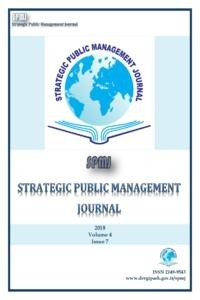Van Kent Merkezi ve Yakın Çevresinde Yeşil Altyapı Bileşenlerinin CBS Araçları ile Tanımlanması
Nüfus artışı ve kentsel yayılmanın baskısıyla doğal peyzajların parçalanması sonucu ortaya çıkan habitat ve biyoçeşitlilik kaybını önlemek ve ekosistem işlevlerinin zarar görmesini engellemek amacı ile 20. yüzyılın ortalarından itibaren ekolojik ağlar, yeşil koridorlar ve yeşil altyapı gibi mekansal planlama yaklaşımları geliştirilmiştir. Yeşil altyapı planlama ve tasarım süreci; ekosistem hizmetlerinin doğadan insana ulaşmasını ve doğal kaynakların koruma-kullanım dengesinin gözetilmesini temel alan, sürdürülebilirlik odaklı çözümleri hedefleyen bir yaklaşımdır. Yeşil altyapı sistemi, parklar, bahçeler, tarım alanları, sulak alanlar, ormanlar, yol ağaçlıkları, akarsular, doğal rezerv alanları, tarihi alanlar, göller gibi farklı özellikte ve farklı boyutlardaki doğal ve kültürel alanları içerir. Bu alanlar birbiriyle, merkez (çekirdek), bağ (koridor) ve alan olarak tanımlanan yeşil alt yapı bileşenleri ile ile birbirine bağlanmaktadır. Bu bildirinin amacı; Van Kent merkezinde ve yakın çevresinde, Coğrafi Bilgi Sistemleri kullanılarak belirlenen yeşil alt yapı bileşenlerinin mevcut durumunun saptanmasıdır. Bu kapsamda, alanda yer alan doğal ve kültürel peyzaj öğeleri ARCGIS 10.2’de Spatial Analyst ve 3D Analyst araçları ile analiz edilerek Van Kent Merkezi ve yakın çevresinin yeşil altyapı bileşenleri bakımından mevcut durumu ortaya konmuştur.
Anahtar Kelimeler:
Yeşil Altyapı, Coğrafi Bilgi Sistemleri, Çekirdek
Identification of Green Infrastructure Components via GIS Tools for Van City and Near Surroundings
In the mid-20th century, spatial planning approaches such as ecological networks, green corridors and green infrastructure have been developed in order to prevent the loss of habitat and biodiversity resulting from the fragmentation of natural landscapes with the pressure of population growth and urban expansion. Green infrastructure planning and design process; It is an approach that targets sustainability-oriented solutions, based on the protection of ecosystem services from nature to people and observing the balance of conservationuse of natural resources. Green infrastructure system, parks, gardens, agricultural areas, wetlands, forests, road woodlands, rivers, natural reserve areas, historical areas, lakes, natural and cultural areas of different sizes and different sizes include. These areas are connected to each other by means of green substructure components, which are defined as core (cores), vineyards and spaces. The purpose of this paper is; Determining the current state of the green infrastructure components determined by using Geographical Information Systems in and around Van city center. In this context, the natural and cultural landscaping elements in the area were analyzed in ARCGIS 10.2 by means of Spatial Analyst and 3D Analyst tools and the current situation of Van City Center and its close surroundings in terms of green infrastructure components was revealed.
Keywords:
Green Infrastructure Geographic Information Systems, Core, Natural and Cultural Landscape Elements.,
___
- Ahern, J. (1995), ‘Greenways as a planning strategy’, Landscape and urban planning, Volume 33, No 1-3, pp. 131-155.
- Andersson, E. (2014), et al. ‘Reconnecting cities to the biosphere: stewardship of green infrastructure and urban ecosystem services’, Ambio, Volume 43, No 4, pp. 445-453.
- Benedict M. A., McMahon Edward, T. (2006), Green infrastructure, Island Press, pp. 7-15.
- Bennett, G. (2004). ‘Linkages in practice: a review of their conservation value’. IUCN, pp. 3-11.
- Coşkun Hepcan, Ç. (2008), Doğa Korumada Sürdürülebilir Bir Yaklaşım, Ekolojik Ağların Belirlenmesi ve Planlanması, Basılmamış Doktora Tezi, Ege Üniversitesi, Fen Bilimleri Enstitüsü, İzmir.
- Hoctor T. S. (2003) Regional Landscape Analysis And Reserve Design To Conserve Florida's Biodiversity, PhD Thesis, University of Florida, Florida.
- Jongman Rob, HG., Pungettı G. et al. (2004), Ecological networks and greenways: concept, design, implementation, Cambridge University Press, pp. 12.
- Kapluhan, E. (2014), ‘Coğrafi Bilgi Sistemleri’nin (CBS) coğrafya öğretiminde kullanımının önemi ve gerekliliği’, Marmara Coğrafya Dergisi, Sayı 29, ss. 34-59.
- Kopperoınen, L., Itkonen, P., Niemela, J. (2014), ‘Using expert knowledge in combining green infrastructure and ecosystem services in land use planning: an insight into a new place-based methodology’, Landscape Ecology, Volume 29, No 8, pp. 1361-1375.
- Lovell, S. T., Taylor, J. R. (2013), ‘Supplying urban ecosystem services through multifunctional green infrastructure in the United States’, Landscape Ecology, Volume 28, No 8, pp. 1447-1463.
- Mell, I. C. (2009), ‘Can green infrastructure promote urban sustainability?. In: Proceedings of the Institution of Civil Engineers-Engineering Sustainability’, Thomas Telford Ltd, Volume 162 No 1, pp. 23-34.
- Özeren, M. (2012), Yeşil Altyapı Sistemi Kapsamında Meles Deltası ve Çevresinin Kurgulanması. Basılmamış Yüksek Lisans Tezi, Ege Üniversitesi, Fen Bilimleri Üniversitesi, İzmir.
- Sandstrom, U. G. (2002), ‘Green infrastructure planning in urban Sweden’, Planning practice and research, Volume 17, No 4, pp. 373-385.
- Van Büyükşehir Belediyesi (2016), İmar ve Şehircilik Müdürlüğü CBS verileri.
- Weber, T., Sloan, A., Wolf, J. (2006), ‘Maryland's Green Infrastructure Assessment: Development of a comprehensive approach to land conservation’, Landscape and Urban Planning, Volume 77, No 1-2, pp. 94110.
- Wu, J. (2013), ‘Landscape Sustainability Science: Ecosystem Services and Human Well-Being in Changing Landscapes’, Landscape Ecology, Volume 28, No 6, pp. 999-1023.
- Başlangıç: 2015
- Yayıncı: Yüksel DEMİRKAYA
Sayıdaki Diğer Makaleler
Kamu Kurumlarında Değişim Öncüsü: Dönüştürücü Lider
Seda MUMLU KARANFİL, Vala Lale TÜZÜNER
İstanbul’un Koruma Planlaması Sorunsalı: Yıkma/Yapma Çelişkisi
Ömer Faruk GENÇKAYA, Fadime BOZTAŞ
Van Kent Merkezi ve Yakın Çevresinde Yeşil Altyapı Bileşenlerinin CBS Araçları ile Tanımlanması
Mali Saydamlığın Sağlanmasında Kamu Görevlilerinin Ceza Hukuku Yoluyla Denetimi
Yerel Yönetimlerde Akıllı Şehir Vizyonu: Şehir Yönetim Araçları Ve Trendleri
Muhammed Attila SEVİM, İbrahim KIRCOVA, Esra ÇUHADAR
Public Management Development in England: New Right, New Left and Third Way
Türkiye'de Sigara Bağımlılığını Azaltmada Sigara Vergilerinin Etkisi
